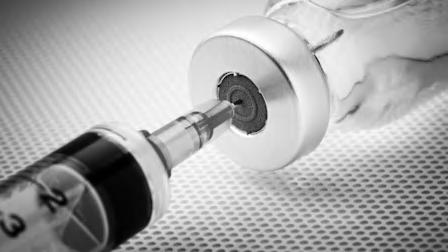How to Prevent Shingles and What to Do if You Get It
Everything you need to know about this painful illness and the vaccine that can protect you

Chickenpox may be fairly rare these days, thanks to the vaccine introduced for it in 1995. But if you’re one of the millions of Americans who had chickenpox in your youth, you probably know it can come back to haunt you many years later, in the form of shingles, which causes a blistery rash but can have more serious effects.
Both chickenpox and shingles are caused by the varicella-zoster virus, says Sharon Curhan, MD, ScM, a physician and epidemiologist at Brigham and Women’s Hospital and Harvard Medical School in Boston. "After a person has chickenpox, the virus stays in their body for the rest of their life."
How Sick Can Shingles Really Make You?
It varies from person to person. The blistery rash, which can be painful and itchy, is certainly uncomfortable for most people. In 8 percent of cases, people also experience eye shingles, which causes pain, redness, and swelling in one or both eyes and can even lead to permanent vision loss. Up to 18 percent of people with shingles develop postherpetic neuralgia (PHN)—severe nerve pain in the area of the rash—that can linger for months or even years.
In a small number of cases, shingles can cause even more serious complications, as it did for Sen. Dianne Feinstein, D-Calif., who experienced vision and balance impairments, facial paralysis, and encephalitis (brain swelling) after coming down with the virus. Occasionally, shingles can also cause hearing problems or pneumonia, and very rarely, it can lead to death—it’s thought that fewer than 100 people die from the virus each year, according to the CDC.
Shingles may also affect systems such as the heart. A study published in the Journal of the American Heart Association in 2022 found that the virus is associated with an almost 30 percent higher long-term risk of heart attack or stroke. It’s thought shingles may cause damage to blood vessels, says study author Curhan. However, because the study was conducted before Shingrix became widely available, more research needs to be done to determine whether the vaccine may be protective.
Who Should and Shouldn't Get Shingrix?
The CDC recommends that almost everyone over the age of 50 get two doses of the Shingrix vaccine, including those who already had shingles. (The doses should be separated by two to six months.) Adults ages 19 and older who have weakened immune systems due to a medical condition or treatment should also get two doses of Shingrix.
Those who have ever had a severe allergic reaction to any component of the vaccine shouldn’t get it, and people who had a severe allergic reaction after their first dose of Shingrix shouldn’t have a second dose. The CDC also doesn’t recommend getting the vaccine if you currently have shingles or a moderate or severe illness, such as COVID-19 or the flu. Wait until you recover. (If you have a mild cold, it’s okay.) It’s also fine to get Shingrix at the same time as other adult vaccines, like your flu shot or an updated COVID-19 vaccine, Schaffner says.
Should You Still Get the Newer Shingles Vaccine if You Got Zostavax 10 Years Ago?
Yes, say experts. (The CDC says it’s safe to do so after five years.) Zostavax, the original shingles vaccine, was shown to reduce the risk of shingles by 51 percent and the risk of PHN by 67 percent. Shingrix, on the other hand, is 97 percent effective at preventing shingles in people between ages 50 and 69, and 91 percent effective in people ages 70 and older. It’s also about 90 percent effective in all age groups in preventing PHN.
In addition, Zostavax "worked pretty well initially, but it lost its effectiveness after about five years, especially in people over the age of 70," says Albert Shaw, MD, PhD, a professor of infectious diseases at the Yale School of Medicine in New Haven, Conn. In people ages 70 and up, with healthy immune systems, Shingrix protection appears to remain high for at least seven years after vaccination, according to the CDC.
Do You Need a Shingles Vaccine If You Don't Think You Had Chickenpox as a Child?
Yes. More than 99 percent of Americans born before 1980 have had chickenpox, even if they don’t remember having it, according to the CDC. Most likely, your childhood symptoms were so mild that you (or your parents) didn’t realize you had it, according to Ronan Factora, MD, a geriatrician at the Cleveland Clinic.
What Happens If You Don't Get the Second Vaccine Dose or Don't Get It in the Time Period Recommended?
Two doses are more effective than one, according to a 2021 study published in the journal Clinical Infectious Diseases. That study found that two doses reduced the risk of shingles by 13 percentage points more than one dose. If you missed the window of time for your second dose, the CDC recommends that you just get it as soon as possible.
How Common Are Side Effects From the Shingles Vaccine?
Temporary side effects are very common and can last for two to three days. Most people have a sore arm after the shot, and some also have redness and swelling in the area.
A study published in 2020 in the journal Vaccine found that other somewhat common symptoms may include fever, chills, muscle aches and pain, and fatigue. In terms of more serious effects, a study published in 2022 in the American Journal of Epidemiology—that monitored almost 650,000 vaccine doses given to adults over age 50—found no increase in stroke, convulsions, severe allergic reactions, or irregular heartbeat over those who didn’t receive the vaccine. However, there is a slight increased risk of developing Guillain-Barré Syndrome, where your immune system attacks your nerves, after the Shingrix vaccine. A study published in JAMA Internal Medicine in 2021 found that it occurred in only three cases per million Shingrix doses.
Where Do You Get the Shingles Vaccine, and What Does It Cost?
It’s usually available only at pharmacies. Here’s why: Unlike other vaccines such as the pneumococcal or flu vaccine, which are both covered under Medicare Part B, the shingles vaccine is covered only under a prescription drug plan such as Medicare Part D. This makes it a little more difficult for doctors’ offices to deal with insurance, so they usually simply refer people to their local pharmacy, Schaffner says.
The good news: The Inflation Reduction Act now eliminates all out-of-pocket costs for vaccines recommended by the CDC, so for those who are eligible, the shingles vaccine is free if you have Medicare Part D or private insurance.
What to Do If You Think You Have Shingles
Shingles may bring a few days of pain, burning, or tingling on one side of your body or face, followed by a painful, itchy, blistery rash. You may also have a headache, chills, and an upset stomach.
If you notice such symptoms, call your doctor right away. You’ll be advised to start a prescription antiviral (acyclovir, famciclovir, or valacyclovir) to reduce the course of the illness and the risk of complications. You can also take an over-the-counter pain reliever like acetaminophen (Tylenol and generic) for discomfort. Wet compresses, calamine lotion, and warm oatmeal baths may help, too.
Because you’re contagious, you’ll need to isolate as much as possible, says Nisha Rughwani, a geriatrician at Mount Sinai Health System in New York City. Once the blisters scab over (usually seven to 10 days, though antivirals may speed this up), you’re much less likely to transmit the virus to others. You can expect the rash to fully clear up within two to four weeks. If at any point you experience blisters in the area of your eyes or complications such as hearing loss or facial paralysis, notify your doctor promptly.
Editor’s Note: This article also appeared in the September 2023 issue of Consumer Reports on Health.




















